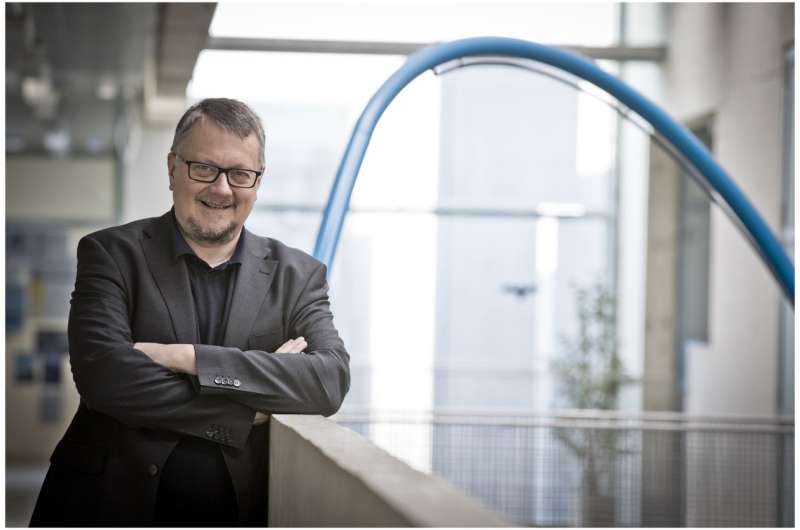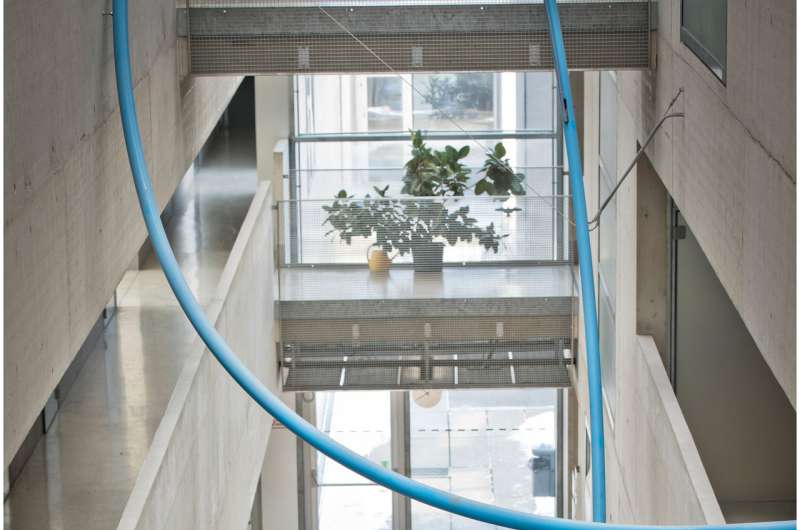Franz Wotawa, Head of the Christian Doppler Laboratory for Methods for Quality Assurance of Autonomous Cyber-Physical Systems at TU Graz. Credit: Lunghammer - TU Graz
Cyber-physical systems combine electronics, software and mechanics. They are highly complex, and in addition to many application possibilities, raises a whole range of issues. They are dependent on error-free software, and the issue of proven quality assurance thus becomes increasingly urgent. Using the example of autonomous vehicles, a team from TU Graz's Institute of Software Engineering together with AVL List GmbH will develop methodologies for quality assurance in such systems in the framework of the "Christian Doppler Laboratory for Quality Assurance Methodologies for Autonomous Cyber-Physical Systems." The official starting shot for this currently seventh active CD lab of TU Graz sounded in the Assembly Hall of TU Graz yesterday, 3rd April 2018.
The Christian Doppler lab has been conceived for a duration of seven years. The Christian Doppler Society and the corporate partner will provide two million euros, with half of this coming from the public sector. The most important funding body is the Federal Ministry for Digital, Business and Enterprise for which CD labs count among the most important instruments at the interface between science and the economy.
Economics ministry promotes basic research and innovation
"Whether autonomous vehicles or Industry 4.0, to ensure that digitalisation works, its systems and applications must be secure," stressed Dr. Margarete Schramböck, Federal Minister for Digital and Economic Affairs. "This CD lab is making an important contribution to this and at the same time will strengthen competitiveness of the corporate partner. Not only all those involved but in the final analysis the whole of society will benefit from the new answers to the challenges of digitalisation."
"MOT certificate' for autonomous systems software
There are still a number of hurdles for autonomous vehicles, from technical feasibility and legal issues to general acceptance by the population. From the point of view of the automotive industry, the question of guaranteeing safety is paramount. Franz Wotawa, head of the new CD lab explains: "Boldly stated: a traditional car has to go for a regular inspection and receives an MOT certificate (certificate of road worthiness). In an autonomous car, the software is itself an element which must fulfill high-quality criteria and be certified itself. Standardised inspection procedures are necessary for this. We now want to develop methods and techniques for this quality assurance in the CD lab together with AVL using autonomous driving as an application case, but also which would be valid in an extended sense for all cyber-physical systems."
The team of the latest CD laboratory at TU Graz (from left): Florian Klück, Nour Chetouane, laboratory manager Franz Wotawa, Bernhard Peischl and Martin Zimmermann. Credit: Lunghammer - TU Graz
The cooperation of many years between AVL and the Christian Doppler Society has allowed the company to deepen its knowledge of technologies and methods and thus to expand its product portfolio. Mihai Nica, contact and research partner of AVL, confirms: "To bring autonomous vehicles to market, the industry needs new verification approaches from the field of informatics and software. The challenge lies in defining a testing programme which could safeguard such self-driving software-driven systems with respect to all critical traffic situations." In this sense, the CD lab complements AVL's further research activities in the field of quality assurance measures for autonomous vehicles.
Developing standardised testing methods
To be able to test an autonomous car at all, you have to let it drive for some 200 million kilometres. In comparison, with traditional cars you need 10,000 or 20,000 kilometres. Against the background of virtual tests, which are a viable alternative, autonomous cars as well as self-learning and adaptive systems in general raise some big questions: What scenarios will take place at all? How will they be combined with each other? And in particular: regarding a system that has constantly learnt and adapted itself, when do you know that it has been sufficiently tested and when can you issue a guarantee for this?
In the framework of the CD lab, researchers will also apply themselves to the question as to how the system can find its way out of unfavourable scenarios independently. Wotawa: "We have to know in what framework an autonomous cyber-physical system works, for instance what absolutely must not be allowed to happen. And when that worst-case scenario does happen, how the system can be safeguarded so that it will take measures to pull itself out of this violation of conditions as soon as possible." Such a violation in the case of an autonomous car, for instance, would be when the car wants to brake or accelerate, but the sensors report that the tyres have not reacted. "The system must not only immediately recognise that something has happened, it's also an urgent question of how it reacts."
But even outside the automotive industry, quality assurance measures for software of interacting electronic systems, whether for communication, data transfer or monitoring, are in demand now. Franz Wotawa emphasises: "The example of autonomous driving is an application case for us in which we can illustrate our very theoretical work in the context of the CD lab. There are many other applications of cyber-physical systems which have nothing to do with autonomous driving, for instance Smart Production, the Internet of Things (IoT) with its digital business models and robotics."
Provided by Graz University of Technology






















